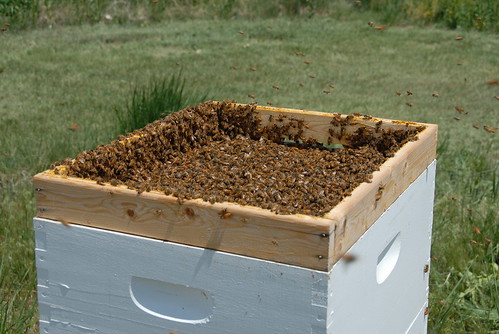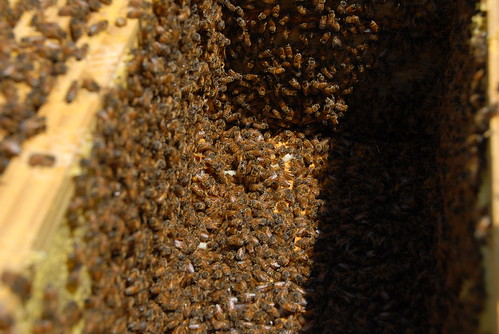
On May 20th (the next day) we went out to inspect. The photo below is the top of Hive #1. It seems to be more crowded than we've ever seen it. This makes us think one of three things happened:
A: It must not have been bees from our hive that swarmed, otherwise we would see few bees at home.
B: It was our own hive that swarmed, and they decided to return to the home base.
C: The new swarm wasn't satisfied with the new digs, and came over attacked and took over Hive #1.
Anyway, were not really sure what explains the very full hive at this point, see both of the photos below:


Later we opened the new hive (Hive #2 below). This was where we had just installed the swarm the day before. Guess what? Nobody was home! Where had they gone?

We sure don't have this beekeeping stuff figured out. If anyone has an explanation, please post a comment.




1 comment:
Hi Becky,
Enjoyed reading your blog on bee activities. My now 12 year old daughter and I have been doing 4H beekeeping for two years now in northern Indiana.
I had my first swarm this past year. One of the local sages suggested when I hived the swarm to grab a frame of brood from a hive minus the bees. That in essence would serve as an "anchor" for the swarm since they are programmed not to abandon brood.
I did that with my hive that swarmed and it worked well. That "swarm" hive swarmed later in the year but alas the bees were too high in the tree to retrieve.
With regards to your honey harvest, etc. I have one suggestion that you might try. I noticed that your queen excluder was above both deeps. Next year when it comes time to put the honey supers on you might try putting all the open brood in the upper deep and the capped brood in the bottom deep along with the queen. The queen excluder then goes between the two deeps. With the open brood in the top box the workers are forced to go through the excluder.
For a much better description you can read back articles by Henry Harris in the Bee Line at http://indianabeekeeper.goshen.edu/mba.html
Post a Comment